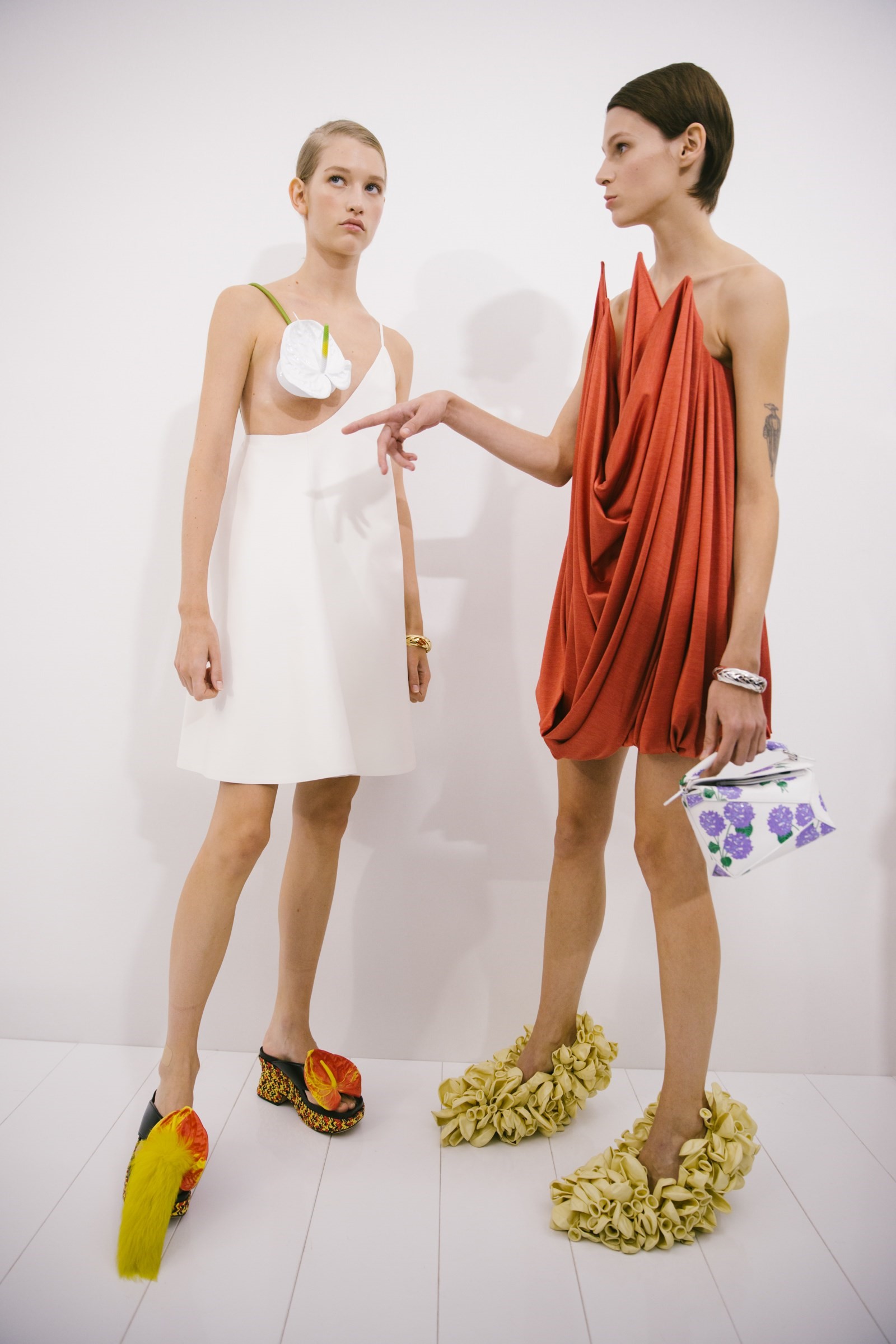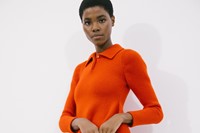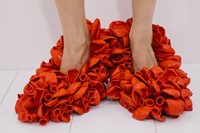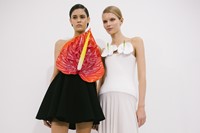At the centre of Jonathan Anderson’s Loewe show, an anthurium flower – one of those plasticky, heart-shaped blooms – poked through the white-slatted floor erected in the Gendarmerie Nationale-Garde Républicaine. Anthuriums seem pretty fake, even when they’re real, but this one was blown to Brobdingnagian proportions, its scarlet spathe blown up to the size of a Fiat Punto, and the models emerging from under its stem. “It’s about something in nature that looks fake but is real,” Anderson said, post-show. “And the idea of iconography – something that reminds us of something else.”
That flower is a loaded symbol, especially in art and fashion. It recalls the sexually-loaded imagery of Guy Bourdin and Robert Mapplethorpe, the former placing it provocatively between the legs of models, the latter photographing the flower so its spadix – the prominent protuberance – wound up resembling a phallus. There was an erotic frisson to Anderson’s Loewe clothes too, flesh bared by strapless bodices or abbreviated skirts, dresses of apparently spontaneous drapery seemingly frozen around the body. A single breast was exposed by a number of asymmetric dresses, the skin covered by another anthurium, this time life-sized. Some other versions of that flower were rendered oversized to span entire torsos, as if fusing with the body of the wearer.


Those flowers were fake, but hyperreal – and reality was what Anderson was after this time, after a couple of seasons toying with the surreality of women dressed as a pair of lips, or with body parts apparently chased in hammered metal. By contrast, even super-sized, those flowers looked real, and so did the clothes, baby-doll silhouette dresses and coats, giant-scale sweaters and shirts worn as dresses, a trio of soft gowns tied sweetly with velvet bows in front. Those offered a hint of a historicism underscored by dresses with panniers, evocative of Las Meninas, the 1656 Velázquez painting depicting the hoop-skirted infanta and her ladies-in-waiting at the Spanish royal court. And then, wasn’t there a hint of a modern historicism to the outfits that appeared pixellated, like a 1990s video game with squared-off outlines and blocky degradations of colour that Anderson described as ‘glitched’, another example of reality and fakery, real garments – and intentionally boring ones, at that – which wound up looking like two-dimensional representations. Just like those fake flowers, that look just like real flowers, but that look fake in themselves. It felt like a meta comment on our culture today, on our inability to define what’s real and counterfeit.
Although reality was the intention, there was something discombobulating – in a way André Breton and the Surrealists would doubtless appreciate – about Anderson’s play with the proportion of accessories and adornment, like the trailing shirts and sweatshirts arresting the eye, disturbing the peace. “There always has to be something for me that’s slightly knife-edge,” said Anderson. “An uncomfortable-ness.” The shoes made me feel uncomfortable, tufted as several were with deflated balloons to appear like some form of sea creature, or perhaps a porous growth. They simultaneously begged to be stroked and tugged and played with, yet repelled the touch. And that feels like Anderson’s remit, even at Loewe – bold new ideas, presented with a bluntness, to shock us into something new.






